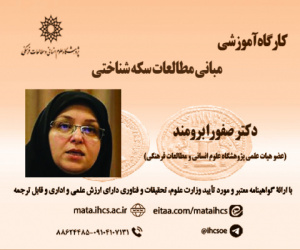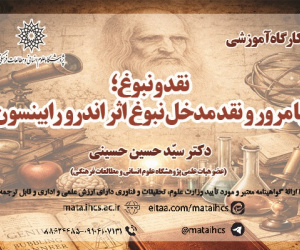چگونگی انعکاس قیام زنگیان (255- 270ه. ق) در تاریخ طبری (مقاله علمی وزارت علوم)
درجه علمی: نشریه علمی (وزارت علوم)
آرشیو
چکیده
قیام زنگیان یکی از مهم ترین حرکت هایی است که در نیمه قرن سوم هجری در محدوده قلمرو خلافت عباسی به وقوع پیوست. این قیام به لحاظ سیاسی و اقتصادی اهمیت بیشتری یافت و در مدت زمان زیادی تلاش دستگاه خلافت بر مهار آن متمرکز شد. تاریخ طبری منبع اصلی و نخستین در بیان اخبار و رخدادهای مربوط به قیام زنگیان است. سلسله مباحث مربوط به تحولات قیام و نحوه بازتاب آن در تاریخ الرسل والملوک با توجه به روش تاریخ نگاری طبری، قابلیت تبدیل شدن به موضوع پژوهشی دارد. براساس این، سوال بررسی شده در این مقاله به چگونگی بازتاب قیام مزبور در تاریخ طبری اختصاص یافته که با روش توصیف و تحلیل تاریخی ارزیابی شده است. با بررسی صورت گرفته این نتیجه حاصل شد که اندیشه طبری بر محور «دفاع از خلافت، ضرورت حفظ جایگاه آن و رد هرگونه حرکت اعتراضی و جنبشی» شکل گرفته است. چگونگی بازتاب قیام و تحولات آن در تاریخ طبری نیز از همین موضوع متأثر است که در قالب سه نمونه متجلی شده است: نخست، در گزارش های طبری به ابعاد، زمینه ها و جوانب احتمالی دیگری از شکل گیری و یا ماهیت قیام پرداخته نشده است. دوم، به صراحت درباره قیام و رهبران آن قضاوت شده است. سوم، کلیه اقدامات و فعالیت های زنگیان، ذیل غارتگری شهرها، ویرانی آبادی ها و کشتار گسترده مردم بیان شده است.How to Reflect Zangids Uprising (255-270 AH) in Tabari History
The Zangids Uprising stands as one of the most significant movements in the mid-third century Hijri within the Abbasid Caliphate. Tabari's historical accounts serve as the primary and foundational source for understanding the events surrounding this uprising. The discussions regarding the developments of uprising and their portrayal in Tabari's History of the Prophets and Kings offer a promising avenue for research. This article specifically investigated how the Zangids Uprising was reflected in Tabari's historical narrative, employing a method of historical description and analysis.
The investigation concluded that Tabari's perspective centered on "defending the caliphate", emphasizing the importance of preserving its authority and rejecting any dissent or opposition. This viewpoint significantly influenced how the uprising and its developments were depicted in his history. This was evident in 3 key aspects: First, Tabari's accounts failed to address the dimensions, contexts, and potential ramifications of the uprising formation. Second, the uprising and its leaders were explicitly evaluated in a critical light. Third, the actions and activities of the Zangids were portrayed within a narrow framework characterized primarily by looting, destruction of settlements, and widespread slaughter.
Keywords: Zangian Uprising, Sāheb al-Zanj, Abbasid Caliphate, Tabari History.
Introduction
The Zangids Uprising (255-270 AH) stands as a significant socio-historical event in the Islamic world. Occurring at the northern tip of the Persian Gulf, specifically in the commercial port of Basra, this uprising unfolded over a span of 14 years and 4 months in the 3rd century AH. It is regarded as one of the most notable and thought-provoking occurrences of this period, particularly distinguished from other developments in the Islamic realm that were predominantly political and military in nature. The manner, in which historians have reflected on this event, warrants careful consideration. Additionally, the existing ambiguities surrounding the motivations, goals, and underlying reasons for the uprising highlight the necessity of examining its various dimensions.
Muhammad bin Jarir Tabari, a renowned historian of the 3rd century AH and the author of the influential work Tarikh al-Rosol wa al-Moluk, is among the first historians to provide a detailed account of the Zangids movement. Three key factors underscore the importance of analyzing Tabari's perspective on this uprising: First, Tabari lived during a period that closely followed the events in question, making him one of the nearest historians to the time of the incident. Second, he is the only historian, who has extensively documented the uprising, with subsequent historians relying heavily on his accounts for their discussions. Finally, Tabari confronts the leaders and actions of the uprising in a manner that diverges from his typical historiographical style.
This article explored how the Zangids Uprising was represented in Tabari's Tarikh al-Rosol wa al-Moluk, focusing on his narratives and reports from the uprising inception in Bahrain to its conclusion in Mokhtara. It sought to elucidate the actions and performance of the Zangids through the lens of Tabari's historical perspective.
Materials & Methods
This article examined the subject and research problem through 4 key axes. The first axis presented Tabari's scholarly persona and historiographical methodology, discussing the intellectual and social characteristics of his era, as well as his approach to historical writing. The second axis focused on how the Zangids Uprising was represented in Tabari's history, primarily avoiding other narratives regarding the uprising. The subsequent analysis concentrated on the unfolding events and developments of the uprising as depicted in Tabari's works. In the final axis, the article explored Tabari's persistent portrayal of looting, destruction, and violence in relation to the uprising, emphasizing that he framed the events within this context. By referencing primary historical sources and utilizing existing research, the study investigated the research problem and hypothesis through a method of historical description and analysis.
Research Findings
This study revealed several key insights regarding the Zangids Uprising as reflected in Tabari's Tarikh al-Rosul wa al-Muluk. The findings indicated that Tabari’s portrayal of the uprising was heavily influenced by his allegiance to the Abbasid Caliphate and his specific historiographical approach.
One-Sided Perspective: Tabari adopted a clear stance that supported the caliphate while rejecting the legitimacy of the Zangids Uprising. This bias was evident in his selective reporting, where he emphasized the negative aspects of the uprising—namely, looting, destruction, and violence—while largely neglecting its broader social and political contexts.
Limited Coverage of the Uprising Dimensions: The research findings showed that Tabari failed to explore the various dimensions and underlying causes of the uprising. His accounts lacked a comprehensive examination of the motivations, goals, and responses of the participants, leading to a one-dimensional narrative that focused solely on the destructive consequences of the uprising.
Focus on Abbasid Centrality: The analysis demonstrated that Tabari’s recounting of the uprising was predominantly centered on the actions and reactions of the Abbasid caliphate. This focus often sidelined external influences and the broader implications of the uprising within the Islamic world, illustrating a narrow interpretation of the historical events.
Destructive Nature of the Uprising: Throughout his historical narrative, Tabari framed the Zangids Uprising as a movement characterized primarily by chaos and violence. This portrayal reinforced the perception of the uprising as a threat to social order rather than a legitimate expression of dissent or a complex social movement.
Implications for Historical Understanding: The study concluded that while Tabari's account was invaluable as a primary historical source, it required careful interpretation. Researchers must consider the limitations of his perspective and seek additional narratives that might provide a more nuanced understanding of the Zangids Uprising, including its socio-political dimensions and its leaders’ motivations.
In summary, the findings indicated that Tabari's historiographical method significantly shaped his depiction of the Zangids Uprising, highlighting the need for further investigation into the complexities of this pivotal historical event.
Discussion of Results & Conclusion
This article investigated how the Zangids uprising was portrayed in Tarikh al-Rosol va al-Moluk. The significance of this research lay in the fact that Tabari's history was considered one of the most important sources on the Zangids uprising, with many older and newer studies drawing extensively from it. Notably, Tabari approached this event in a manner that diverged from his established historiographical methods, aligning instead with his religious beliefs and political discourse. He adopted a one-sided stance that fully supported the caliphate while rejecting the Zangids uprising, which could be summarized in 3 key points:
First, Tabari did not explore the various dimensions and potential perspectives of the uprising, omitting numerous reports related to the event. Rather than presenting a range of narratives, he offered a specific interpretation that decisively condemned the uprising using strong rhetoric.
Second, his account of the uprising was primarily centered on the actions of the Abbasid caliphate, reflecting developments that were directly connected to it. In Tabari's history, there were few discussions that engaged with external factors related to the Abbasid caliphate system in the context of the Zangids uprising.
Third, in line with his viewpoint, Tabari framed the actions of the uprising and its leaders as primarily characterized by looting, destruction, and widespread violence against cities and villages. Consequently, his portrayal suggested that the uprising was fundamentally a movement marked by devastation and bloodshed. The prevailing impression from Tabari's account was that the uprising was defined by themes of "looting, killing, and destruction" from beginning to end.
In conclusion, while Tabari's history emphasized a clear position and specific interpretation of the uprising, it was essential to consider the significant narratives throughout the stages of the uprising formation, continuation, and decline. These narratives provided a context that invited further reflection beyond purely political and military interpretations. Thus, examination of the Zangids uprising in Tabari's history warrants deeper inquiry and ongoing scholarly attention.









